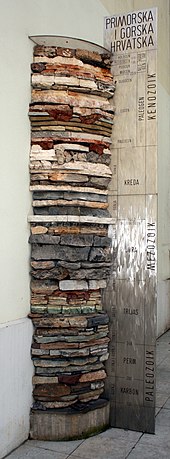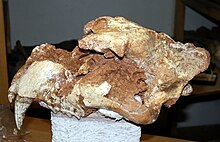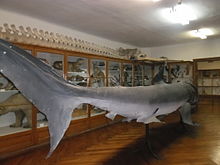
Vlaho Bukovac was a Croatian painter and academic. His life and work were eclectic, for the artist pursued his career in a variety of locales and his style changed greatly over the course of that career. He is probably best known for his 1887 nude Une fleur, which he created during his French period and which received attention in various reviews and publications during his lifetime. Bukovac was the court painter for Obrenović dynasty, Karađorđević dynasty and Petrović-Njegoš dynasty. In Zagreb, he is probably best known as the painter of the 1895 theatre curtain in the Croatian National Theatre.

Krapina is a town in northern Croatia and the administrative centre of Krapina-Zagorje County with a population of 4,482 (2011) and a total municipality population of 12,480 (2011). Krapina is located in the hilly Zagorje region of Croatia, approximately 55 km (34 mi) away from both Zagreb and Varaždin.
Ante Radonić is a Croatian astronomer and popularizer of astronomy, who writes for the weekly radio show Andromeda.
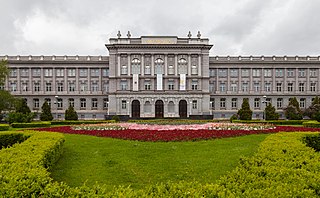
The Mimara Museum is an art museum in the city of Zagreb, Croatia. It is situated on Roosevelt Square, housing the collection by Wiltrud and Ante Topić Mimara. Its full official name is the Art Collection of Ante and Wiltrud Topić Mimara.

The Museum of Contemporary Art is a contemporary art museum located on Dubrovnik Avenue in Zagreb, Croatia. It is the biggest and most modern museum in the country.

The Marton Museum is Croatia's first private museum and specializes in 18th and 19th century European applied art. The Marton Museum derives its name from its original founder, Veljko Marton, whose collection is featured within its walls.

The Croatian Museum of Naïve Art is a fine art museum in Zagreb, Croatia dedicated to the work of naïve artists of the 20th century. The museum holdings consist of over 1,900 works of art - paintings, sculptures, drawings and prints, mainly by Croatians but also by other well-known international artists in the genre.
Matija Skurjeni (1898–1990) was a Croatian painter associated with the naïve art movement. He helped to found the Association of Independent Naïve Artists of Croatia and he is considered one of the most influential independent naïve artists. He has five rooms of his work at the Croatian Museum of Naïve Art and many of his works at the Matija Skurjeni Gallery in Zaprešić.

The Nikola Tesla Technical Museum is a technology museum located in Zagreb, Croatia, which collects and showcases scientific and technical appliances used in the country's history. It exhibits numerous historic aircraft, cars, machinery and equipment.

The Museum of Broken Relationships is a museum in Zagreb, Croatia, dedicated to failed love relationships. Its exhibits include personal objects left over from former lovers, accompanied by brief descriptions.

The Archaeological Museum in Zagreb, Croatia is an archaeological museum with over 450,000 varied artifacts and monuments, gathered from various sources but mostly from Croatia and in particular from the surroundings of Zagreb.
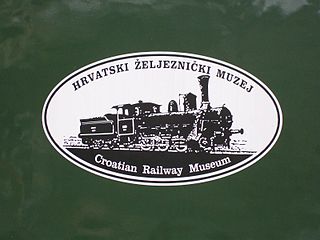
Croatian Railway Museum is a specialized technical museum in Croatian capital Zagreb, located on the premises of Zagreb Glavni kolodvor, the main railway station of Zagreb.
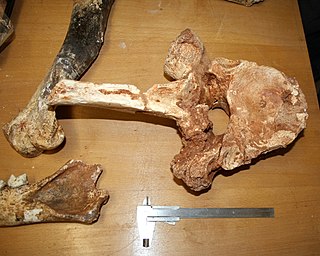
Vrtare Male is a pit cave located near Dramalj, a seaside village in Croatia. Its depth is believed to be 39 metres (128 ft), with around 10 metres (33 ft) submerged. It was first explored in 1966 by the Mountaineering Society Velebit. In 1996, Dragan Pelić, a photographer and spelaeologist from nearby Crikvenica, descended into the cave and found a rare Decapoda specimen, which was confirmed by Croatian spelaeologist Branko Jalžić. This prompted further cave expeditions, starting in 2005, and the establishment of a protected area around Vrtare Male.
Ferdinand Budicki Automobile Museum is an automobile museum in Zagreb, Croatia, the first one in the country. It is located on Zaprešićka 2, Jablanovec as a part of the Westgate shopping center. It was opened on 3 July 2013, and features more than 100 antique and classic cars, motorcycles and bicycles, as well as several thousand photos from family albums of first Croatian drivers.

Croatian History Museum is a museum of history located in the Vojković Palace on Antun Gustav Matoš Street in the historic Gornji Grad district of Zagreb, Croatia. The museum holdings consist of around 300,000 objects divided into 17 collections. In addition to a part of the Meštrović Pavilion, it also administers the Ivan Goran Kovačić Memorial Museum in Lukovdol.

The Croatian Apoxyomenos is an Ancient Greek statue cast in bronze in the 2nd or 1st century BC; it was discovered in 1996 on the bottom of the sea near the Croatian islet of Vele Orjule, southeast of the island of Lošinj. It represents an athlete – Apoxyomenos – in the act of scraping sweat and dust from his body with the small curved instrument called a strigil.

Vučedol Culture Museum is a museum of prehistoric culture in at Vučedol, near the city of Vukovar, Croatia.
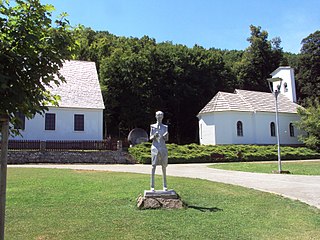
The Nikola Tesla Memorial Center is a cultural-historical site and museum located in Smiljan, Croatia, located at the birthplace of Nikola Tesla, one of the world's foremost engineers and inventors. It is dedicated to Tesla, who was born in 1856 in his Serb parents house in Smiljan, then part of the Croatian Military Frontier within the Habsburg monarchy. The young engineer later left his homeland to work in America. The Lika Museum in nearby Gospić administers the site.
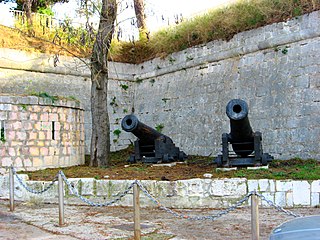
The Croatian Maritime Museum is a maritime museum in Split, Croatia. The museum is located in a 19th-century building, itself built within the 17th-century Gripe Fortress. The museum was established in 1997 as a successor to the Military-Maritime Museum established by the Yugoslav Navy in 1960 while also inheriting the collection of the Maritime Museum of the Yugoslav Academy of Sciences and Arts which existed between 1956 and 1985.

The Multimedia Center of the Zagreb University Referral Center (MMC) was an institution which existed in Zagreb, Croatia, from 1972 to 1995.



